Sulphur Index 2019
A complete listing of all articles and news items that appeared in Sulphur magazine during 2019.
A complete listing of all articles and news items that appeared in Sulphur magazine during 2019.
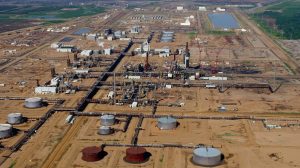
Canadian Press reports in December have highlighted concerns that the new tighter IMO rules on sulphur content of marine fuels, which came into force on January 1st, could lead to reduced demand for oil sands bitumen and syncrude. Canadian oil output has been steadily increasing over the past two decades, mainly due to expanded bitumen recovery, which now accounts for 50% of Canada’s 4.6 million bbl/d of oil production. However, the discount for Western Canadian Select bitumen blend crude prices versus North American benchmark West Texas Intermediate could almost double to $30/bbl in January, according to consultancy Wood Mackenzie, averaging US$23-24/bbl for most of 2020, as US and other refiners use less heavy, sour oil and switch to lower sulphur feeds to try and optimise low sulphur fuel oil (LSFO) production. However, reduced output from Canada’s competitors Mexico and Venezuela is currently helping to mitigate this. Oil sands producers with refineries or upgraders are expected to benefit as the new standards will increase demand for refined low-sulphur fuels. For example, Husky Energy has expanded its Lloydminster Upgrader to produce an extra 4,000 bbl/d of diesel, and reconfigured its Lima refinery in Ohio to use more heavy oil.
The Ma’aden Wa’ad Al Shamal Phosphate Company (MWSPC) has signed a service agreement for a period of three years with DuPont Clean Technologies for its sulphuric acid plant at Sirhan. The service programme will include activity testing of catalyst samples, evaluation of catalyst performance, plant optimisation, troubleshooting and management of catalyst replacement. DuPont says that it will also track plant performance and assess its overall health using pre-agreed metrics and its proprietary PeGASyS™ gas chromatography system, which can be used to detect possible leaks in gas-gas heat exchangers, identify SO2 gas bypassing and measure overall plant conversion in order to optimise plant operation, reduce SO 2 emissions, increase production and improve converter performance.
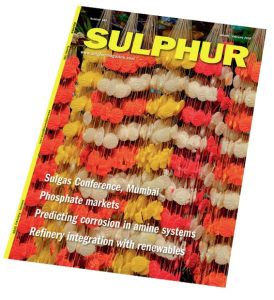
A New Year is typically a time for taking stock, for looking back at the year just gone, and thinking about the year to come. This year of course marks a bigger transition, from the 2010s to the 2020s. The past decade has been a volatile one, existing under the shadow of the global financial crisis of 2008-09, from which the world was still just emerging in 2010. Over the past decade, ‘quantitative easing’ has helped prevent deflation and driven a decade long stock market rally, but also kept both public and private debt levels high, as interest rates stay low. Weaning the global economy off QE has proved to be far more difficult than many anticipated.

The Sixth Annual MESPON Forum took place 7-10 October at the Rosewood Hotel Abu Dhabi, where the global sour gas and sulphur community gathered for four days of networking, learning, and collaboration. This year’s theme highlighted new trends, innovations and best practices in the field of sour gas processing that enhance operations.

CRU’s Sulphur + Sulphuric Acid 2019 conference was held in Houston last November.
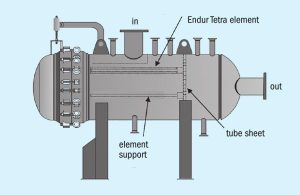
Hydrocarbon contamination of sour water streams feeding sour water strippers is a well-known challenge in the refining and gas processing industry. The source of this challenge is the formation of a stable oil emulsion in an aqueous phase that may contain both H 2 S and NH 3 . The typical approach to the problem involves large residence time tanks with the assumption that droplet settling will occur over a long enough time frame. In practice, droplet settling is very slow due to a variety of reasons, and as a result, operators encounter sour water heat exchanger fouling, stripper fouling, hydrocarbon excursions to sulphur recovery units along with other operating challenges. M. Thundyil, D. Seeger and E. McIntosh of Transcend Solutions present a case study of the TORSEP™ oil and solids removal system for contamination removal from a sour water feed stream. The case study illustrates the effect on heat exchanger fouling along with the effect of the variation of several system parameters on operating performance and economics.
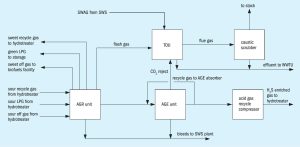
M. van Son and S. Sreejit of Comprimo present a case study involving the design and potential integration of the sour water and acid gas treatment units for a renewable diesel facility with an existing refinery sulphur complex. The case study evaluates the potential for operating cost reduction by integrating an enrichment loop in the acid gas treatment plant as well as for using the existing infrastructure of the refinery to limit emissions.
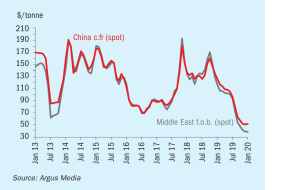
Meena Chauhan , Head of Sulphur and Sulphuric Acid Research, Argus Media, assesses price trends and the market outlook for sulphur.
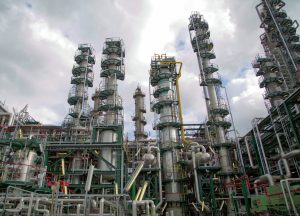
The refining industry, the source of half of the world’s elemental sulphur, continues to face major structural changes from changing feedstock and product slates and increasing regulatory burdens.